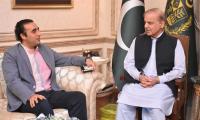I am in New Delhi, attending a conference. The conference was originally due to take place at the Muslim-majority Jamia Millia Islamia University. The university has been a centre of protests against the Citizenship Amendment Act (CAA) which came into law in December last year.
The CAA grants a path to citizenship to refugees from Afghanistan, Pakistan, and Bangladesh, who sought refuge in India prior to 2015. The CAA does not however include Muslims, while including Hindu, Sikh, Jain, Buddhist, Christian and Parsi refugees. It is obviously discriminatory – for instance, there was a Muslim presence in India at last a century before the first Parsis arrived from Persia.
The disturbances at Jamia prompted the conference organizers to change the conference venue to another location in the middle of Delhi, but shortly afterwards participants were informed that the conference would now be held at a location near the airport, some distance away from Delhi’s centre.
India’s ruling party, the Bharatiya Janata party (BJP) of prime minister Narendra Modi (Trump’s “good friend”), has an openly Hindu nationalist agenda.
Shortly before I arrived elections for the Legislative Assembly of the National Capital Territory of Delhi were held.
The BJP ran a stridently fearmongering anti-Muslim campaign, and was trounced, winning just 8 seats in the 70-seat assembly. The Aam Aadmi Party (AAP, Common Man’s Party in English) won the remaining 62 seats. The Indian National Congress, India’s oldest party, which had ruled Delhi for 15 years until 2013, once again failed to win a single seat.
A taste of the BJP’s anti-Muslim campaign is provided by two episodes.
During the election campaign the BJP minister Giriraj Singh said the Muslim-majority Delhi suburb of Shaheen Bagh was a “breeding ground for suicide bombers”.
Campaigning for the BJP in Delhi, Yogi Adityanath, the chief minister of Uttar Pradesh, well-known for stoking hatred and violence against India’s Muslims, cut to the factionalist chase by saying that (Muslim) “terrorists” should be fed with “bullets not biryani”.
The BJP’s attempt to polarize the electorate obviously backfired, and the AAP returned to power in Delhi.
The AAP, led by Arvind Kejriwal, is probably the most left-wing political party in India apart from the Communist Party of India. It supports legalizing both homosexuality etc, has a significant anti-corruption agenda, and reduced the price of electricity when it came to power (by means of subsidies).
Kejriwal has been fighting legal battles recently over his request that AAP party members should offer bribes to BJP politicians and tape the encounters when this happened. His opponents sued, making the point that a blatant incitement to break the law is illegal. The case is continuing.
While Modi, who has been prime minister since 2014, was re-elected with a huge majority in the May 2019 national elections, at the state level the BJP has not done well in elections. Since December 2018, it has lost power in five states – Madhya Pradesh, Rajasthan, Chhattisgarh, Maharashtra, and Jharkhand.
Modi is of humble origins, and worked at a tea stall early in his life instead of acquiring a formal education. If they seemed amenable to discussing politics, I asked some of the locals who attended the conference who typically belonged to Modi’s electoral base.
One graduate student said with a hint of exasperation: “his supporters come from the chaiwallah (street tea-seller) class”.
Ah, somewhat analogous, give or take a few obvious differences, to the demographic that supports Trump and Boris Johnson – that is, those who believed themselves to belong, probably correctly, to the “Left Behinds” created by neoliberalism and globalization.
Alas for these LBs, Modi, Trump, and BoJo Johnson are all members of neoliberalism’s executive committee, and so these LBs are the proverbial equivalent of foxes opposing a ban on fox hunting.
(OK, many Brits like me are obsessed, pro or con, about fox hunting. Tories tend to regard it as a quintessential emblem of “Britishness”, while the rest of us view it as a pursuit extraterritorial to one’s humanity.)
Trump is due to arrive in Delhi on 24th February for a state visit. Even though the orange-hued fellow is said to make fun of Modi by mimicking his accent, the visit should go well, despite the fact that negotiations between India and the US on a trade deal have run into choppy waters.
Modi and Trump form a mutual admiration society – if Trump respects a foreign leader, then Modi in all probability ranks just behind Putin, Netanyahu, and Mohammad bin Salman, probably in a tie for fourth place with Kim Jong-un.
The bar’s not high on such matters where Trump is concerned – in fact he’d probably show the door, any door, to a Nelson Mandela, Jawaharlal Nehru, Julius Nyerere, Bruno Kreisky, or Willy Brandt. And let’s not get started on Fidel or Ho Chi-minh!
The reporting here in India, on the front page of Hindustan Times (along with an item on two Indians on the cruise ship quarantined in Yokohama Harbour who had contracted the COVID-19 virus), is that signing the above-mentioned US-India trade deal was going to be the centerpiece of Trump’s visit. At least that seemed to be the Indian government’s hope.
At the last moment, the US Trade Representative Robert Lighthizer said he was “unable to travel indefinitely” to finalize the terms of the deal prior to Trump’s visit.
India with its growing economy wants shale-extracted or “fracked” gas from the US, while the US wants Mastercard and Visa to enter the Indian credit-card market on the same terms as the Indian government-backed credit card RuPay. If this happens, RuPay will be wiped out by Mastercard and Visa, who have global resources sufficient to undercut their Indian-confined competitor.
Should we look to see how much Visa and Mastercard donate to Trump’s re-election campaign?
At the same time there are cynics here who say the trade-deal “glitch” between the US and India is merely a smokescreen for Trump and Modi, arms linked aloft in triumph, to announce to an adoring crowd on Trump’s visit that they had managed somehow to resolve the deal’s impasses thanks to their “special relationship”.
Trump can then boast once again he is the master of the “art of the deal” (“I renegotiated NAFTA, blah blah – woo hoo!”), and Modi can say to Indian voters he plays in the same league as the really big hitters amongst the world’s politicians.
Watch this space to see if the Indian cynics are right.
And meanwhile Delhi continues to be, in the words of one of my Delhi friends, the world’s most polluted major metropolitan area (now that Beijing has managed to clean-up its act thanks to very firm and forthright measures adopted by the authoritarian Chinese government).
This article was originallypublished as: 'Modi’s India'.
Courtesy: Counterpunch.org
Partnership between Pakistan and China in media and culture reflects shared commitment to strengthening bilateral...
This article focuses on single error committed by our respected judiciary which haunts me more than I would care to...
US still leads world in military spending and ability to project military power across globe
On July 3, UNGA adopted another resolution advocating for “free, open, inclusive” environment for AI development
Data, today, defines how we make decisions with tools allowing us to analyse experience more precisely
But if history has shown us anything, it is that rivals can eventually unite when stakes are high enough







